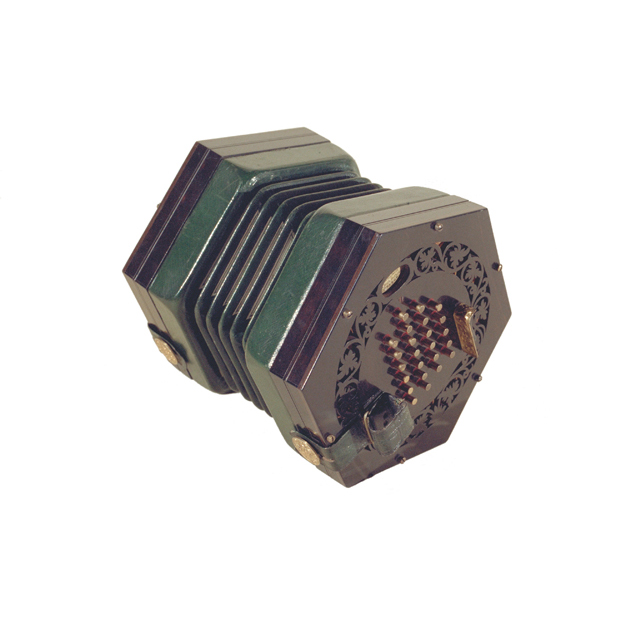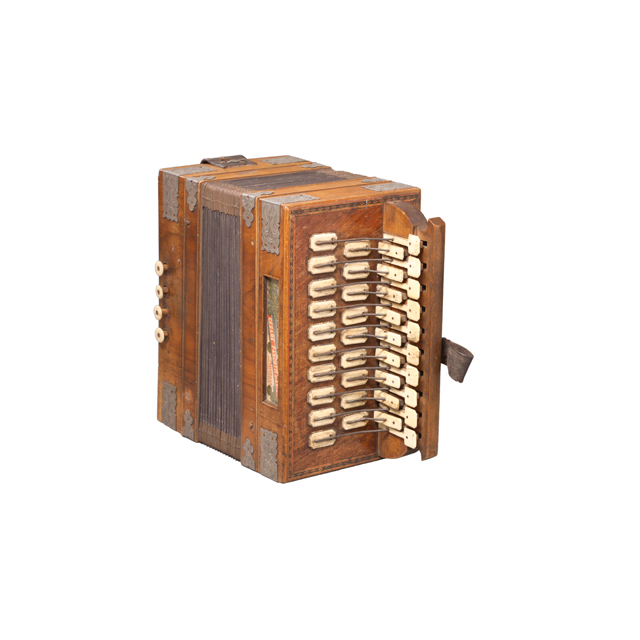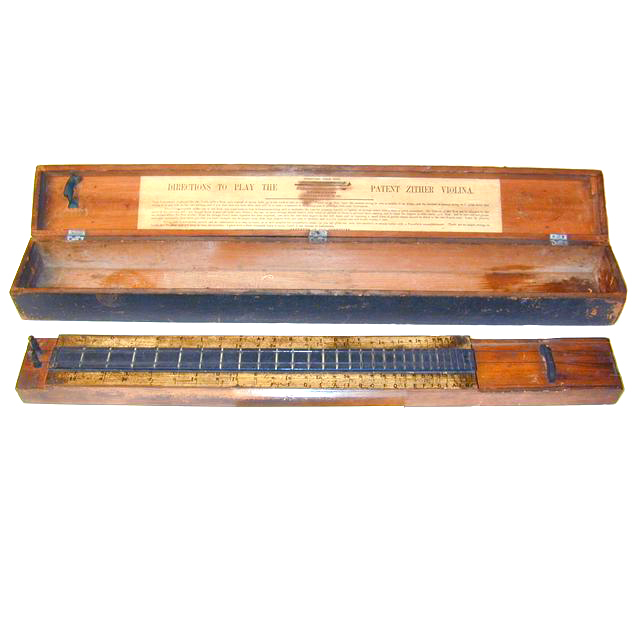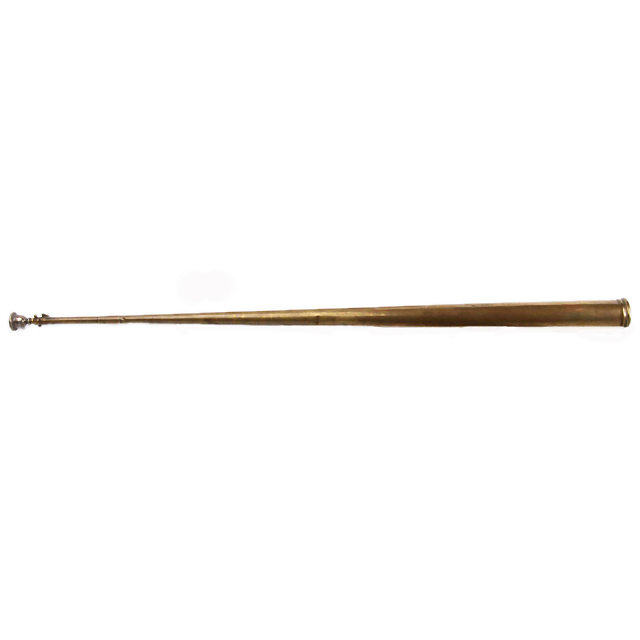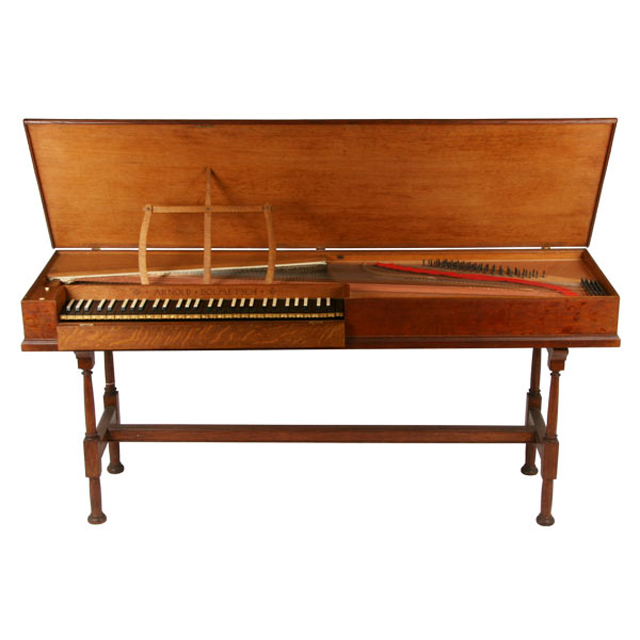
Clavichord with oak case and brass strap hinges. The keyboard covers five octaves, FF-f3. The key levers are probably lime wood. The natural keys veneered with ebony, with gilded arcading and the accidentals of a black wood capped with ivory. Soundboard of coniferous wood with three beech bridges. Double strung, with iron copper and brass. The clavichord has a separate wooden stand with turned legs. The name board bears the inscription: ARNOLD DOLMETSCH between two starburst motifs.
The case is built on the bottom boards, not around them. The bottom boards are a triple laminate of pine about 30mm thick in aggregate. The interior of the lid is plain. The stand can be broken down. The soundboard grain is diagonal at an angle of about 65 degrees running from the treble end of the keyboard towards the spine. The listing is of the soft white felt characteristically used by Dolmetsch and found in many other clavichords by him. The felt is pushed, rather than woven, among the afterlengths, in a manner also characteristic of Dolmetsch's work. See further details in the Shorter Data Sheets completed by MWaitzman on 27 January 2016. Originals in the Music Department History Files. Scans in the Keyboard Cataloguing File on the T drive.
The clavichord is an early keyboard instrument with a soft, delicate sound. Because its strings are struck rather than plucked, it is responsive to touch and the player can produce a range of dynamics and also a vibrato. Dolmetsch performed on instruments such as this during concerts that he gave to introduce listeners to the music and instruments of the past.



